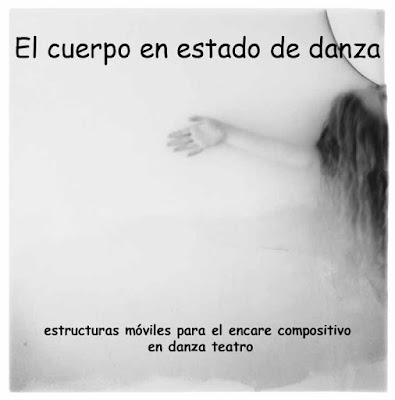The Kitchen presents Ralph Lemon’s Meditation: A One-Day Film Event
Sunday, October 17
The concluding event of Lemon’s How Can You Stay in the House All Day,
Premiering in Brooklyn Academy of Music’s (BAM) Next Wave Festival
New York, NY, September 29, 2010—On Sunday, October 17, The Kitchen presents Meditation, a film
installation conceived and created by Jim Findlay and Ralph Lemon. The one-day event is the closing
chapter of Lemon’s live multi-media project, How Can You Stay in the House All Day and Not Go
Anywhere, which has its New York premiere in this year’s Brooklyn Academy of Music’s (BAM) Next
Wave Festival. The installation will be on view from 12:00 P.M. to 5:00 P.M. at The Kitchen (512 West
19th Street). Admission is free.
The first three portions of How Can You Stay—which includes live performance, dance and visual art— are
presented on the proscenium stag of BAM’s Harvey Theater, while Meditation is a film installation where
audience members can come and go as they please. Only being seen at The Kitchen, the installation
reiterates the themes from How Can You Stay… through projection, light and shadow, creating an
immersive environment. The film invites viewers to absorb the rhythms of an imagined underlying
narrative or simply follow their own free form associations. Throughout the entirety of How Can You
Stay…, Lemon employs these multiple and intertwined media to approach themes of human connection,
loss, and the elusive but ever-compelling possibility of grace.
How Can You Stay in the House All Day and Not Go Anywhere is co-produced by Cross Performance Inc.
and MAPP International Productions. It was co-commissioned by BAM for the 2010 Next Wave Festival,
Krannert Center for the Performing Arts at University of Illinois in Urbana-Champaign, On The Boards
and Walker Art Center.
Ralph Lemon (Concept and Direction) is Artistic Director of Cross Performance, a company dedicated to
the creation of cross-cultural and cross-disciplinary performance and presentation. Lemon builds teams of
collaborating artists - from diverse cultural backgrounds, countries and artistic disciplines - who bring their
own history and aesthetic voices to the work. Projects develop over a period of years, with public sharings
of work-in-progress, culminating in artworks derived from the artistic, cultural, historic and emotional
material uncovered in this rigorous creative research process.
In 2005, Lemon concluded The Geography Trilogy, a decade-long international research and performance
project exploring the "conceptual materials" of race, history, memory and the creative practice. The project
featured three dance/theater performances: Geography (1997); Tree (2000); and Come home Charley
Patton (2004); two Internet art projects; several gallery exhibitions; the publication of two books by
Wesleyan University Press, and a third to be published in 2011. Other recent projects include the three-
DVD set of The Geography Trilogy; a web-installation (www.ralphlemon.net); a 2009 multimedia
performance commission for the Lyon Opera Ballet, Rescuing the Princess; and Lemon’s current
multimedia project How Can You Stay In The House All Day And Not Go Anywhere?
Lemon was one of fifty artists to receive the inaugural United States Artists Fellowship in 2006. He has
received two "Bessie" (NY Dance and Performance) Awards, a 2004 New York Foundation for the Arts
Prize for Choreography, a Guggenheim Fellowship and a 2004 Fellowship with the Bellagio Study and
Conference Center. In 1999, Lemon was honored with the CalArts Alpert Award in the Arts. Lemon has
been artist-in-residence at Temple University in Philadelphia (2005-06); George A. Miller Endowment
Visiting Artist at the Krannert Center (2004); and a Fellow of the Humanities Council and Program in
Theater and Dance at Princeton University (2002). From 1996-2000, he was Associate Artist at Yale
Repertory Theatre. Most recently he was an IDA fellow at Stanford University.
Lemon’s solo visual art exhibitions include: How Can You Stay In The House All Day And Not Go
Anywhere?, Yerba Buena Center for the Arts, San Francisco, CA (2010); (the efflorescence of) Walter,
Contemporary Art Center, New Orleans (2008), The Kitchen, New York (2007) and the Walker Art Center,
Minneapolis (2006); The Geography Trilogy, Zilkha Gallery at Wesleyan University, Middletown, CT
(2001); Temples, Margaret Bodell Gallery, New York (2000); and Geography, Art Awareness, Lexington,
New York (1997). Group exhibitions include: Move: Choreographing You, Hayward Gallery, London, UK
(2010-11) and The Record: Contemporary Art and Vinyl, Nasher Museum at Duke University, Durham,
NC. In January 2011, Lemon will perform at the Museum of Modern Art in New York City in conjunction
with the exhibition, On Line: Drawing Through the Twentieth Century.
Jim Findlay (Video Designer) is a designer, director, performer and creator with a constellation of theater,
performance and music groups. He was a founding member and primary collaborator in both the
groundbreaking performance group Collapsable Giraffe, and the internationally successful music/media
performance company Accinoso/Cynthia Hopkins, as well as being an associate artist of the Wooster
Group since 1994 and a frequent collaborator with Ridge Theater, Bang on a Can and Ralph Lemon.
Other recent work includes video design for R. Buckminster Fuller: The History (and Mystery) of the
Universe at Arena Stage; Rescuing the Princess by Ralph Lemon (Lyon Opera Ballet); and projection
design for DJ Spooky’s Terra Nova: Sinfonia Antarctica. Current projects include Persephone by Ridge
Theater; Stew's Brooklyn Omnibus at BAM; and a commission for the creation of a non-text based work
with director Phil Soltanoff for the Center Theater Group in Los Angeles.
Findlay is also developing, writing and directing a new performance project titled Botanica , to premiere in
2011. Awards include the Henry Hewes Design Award, Lucille Lortel Award, Princess Grace Award, Obie
Awards in 2001 and 2008, and Bessie Awards in 1999 and 2008.



